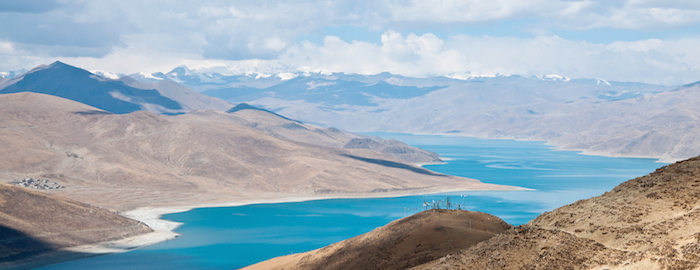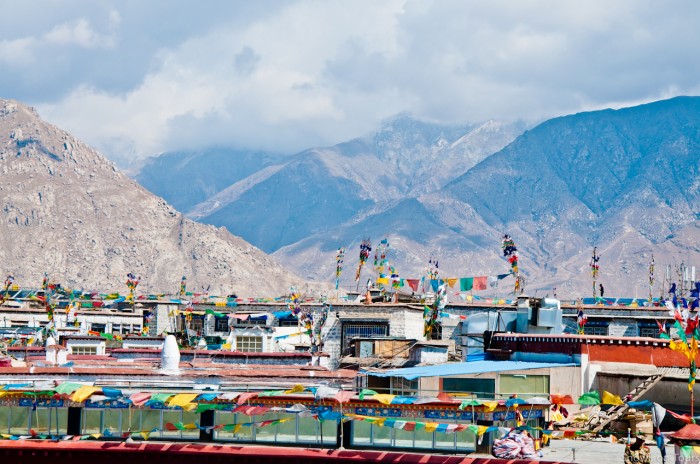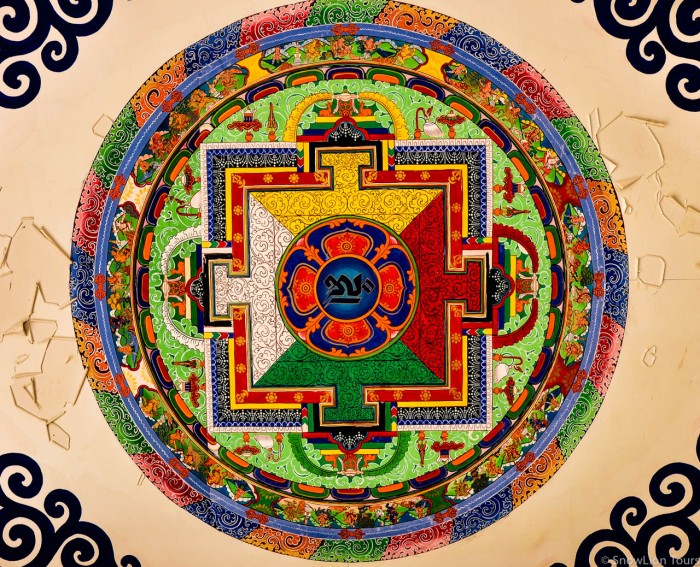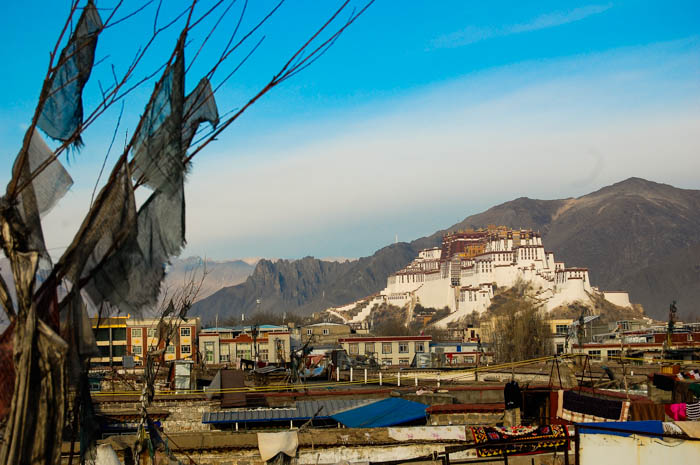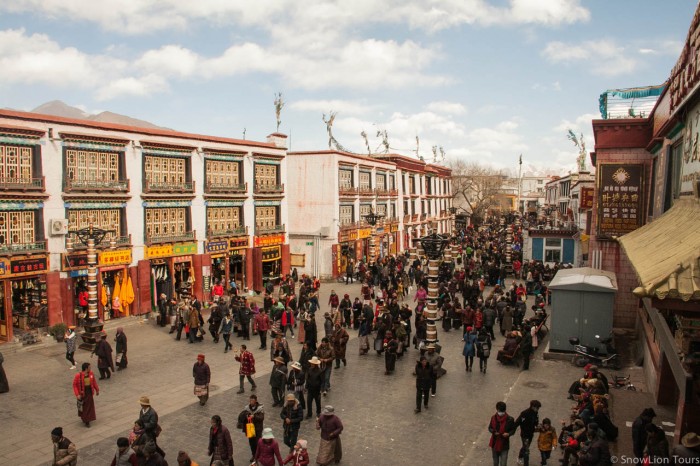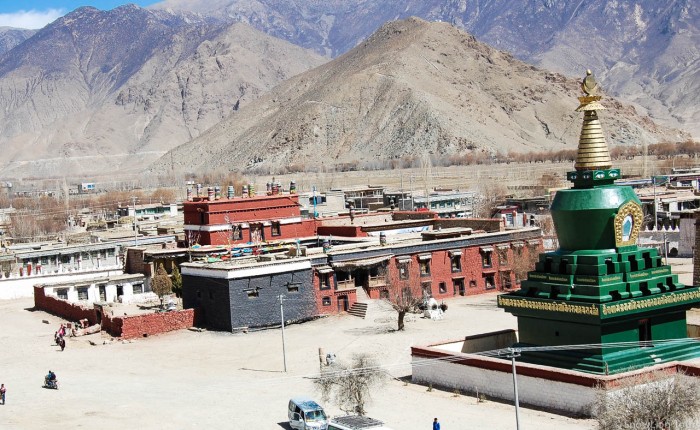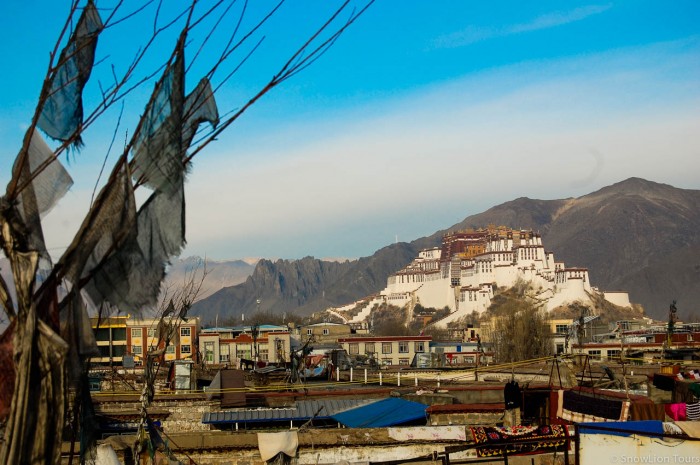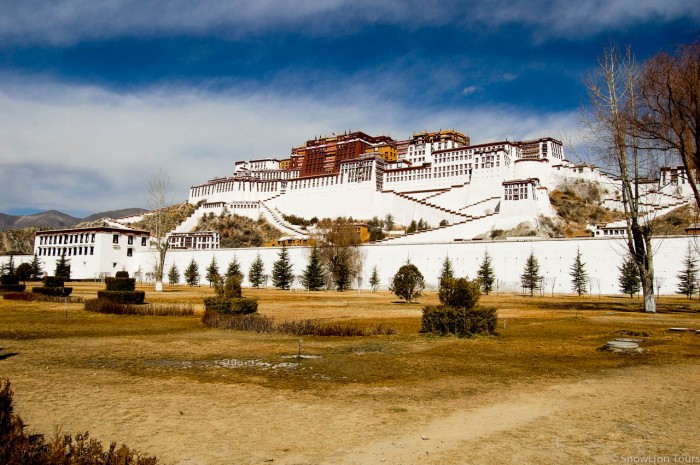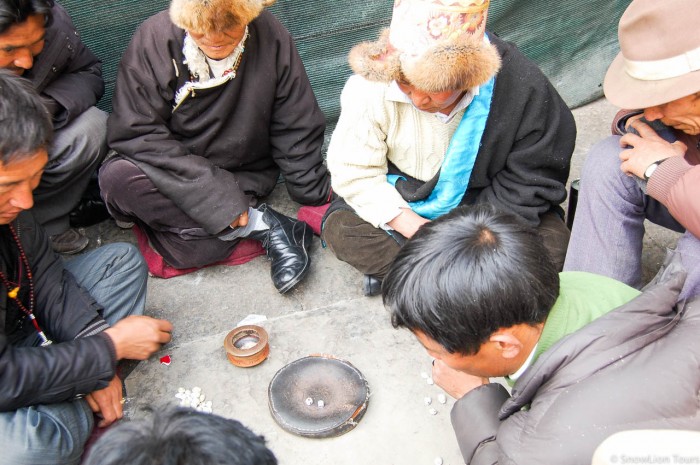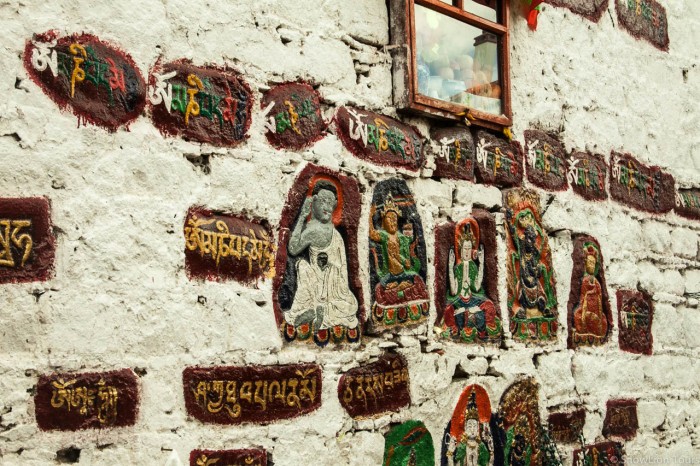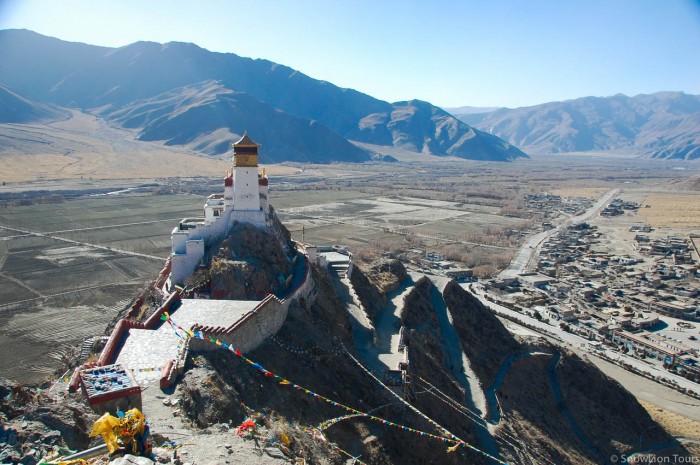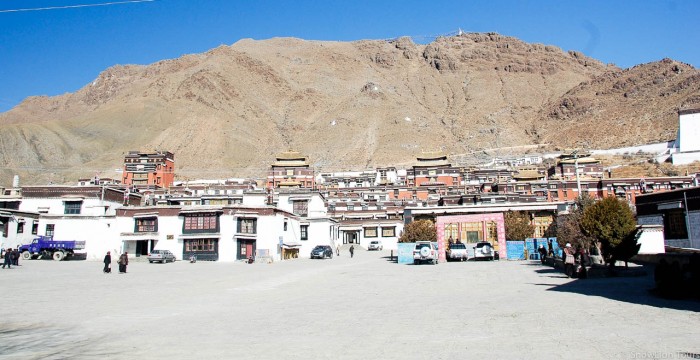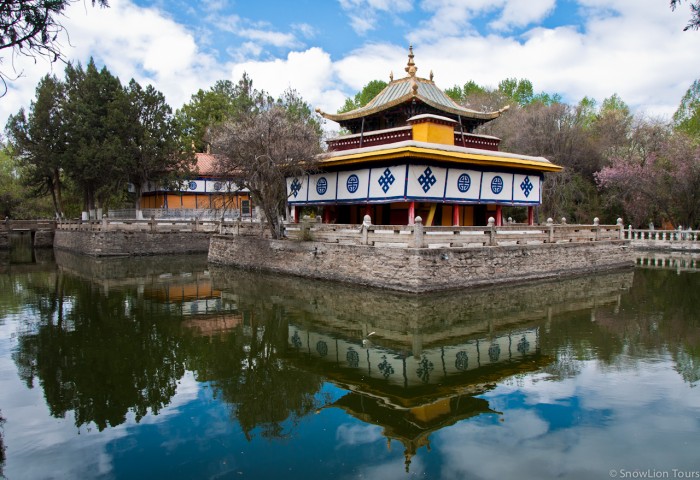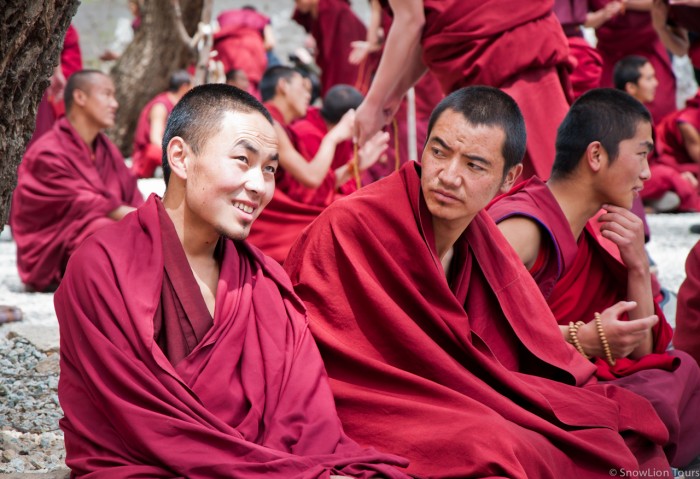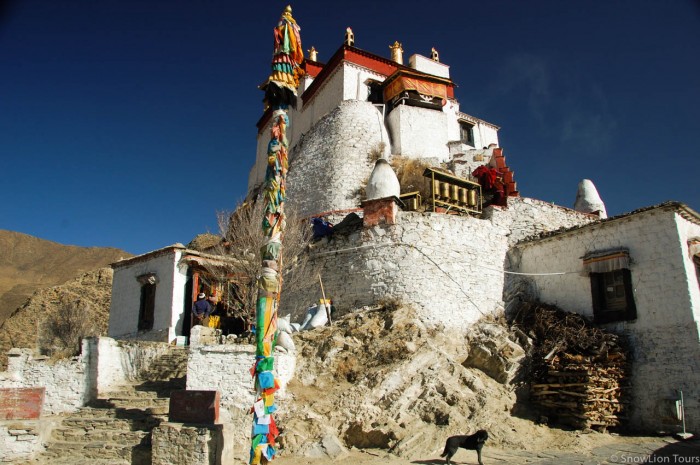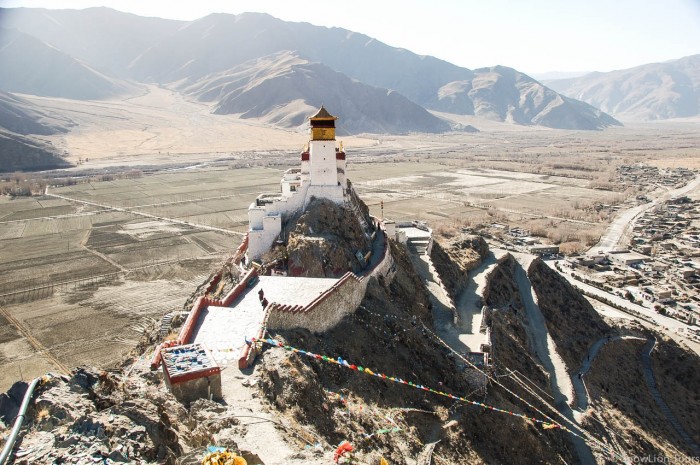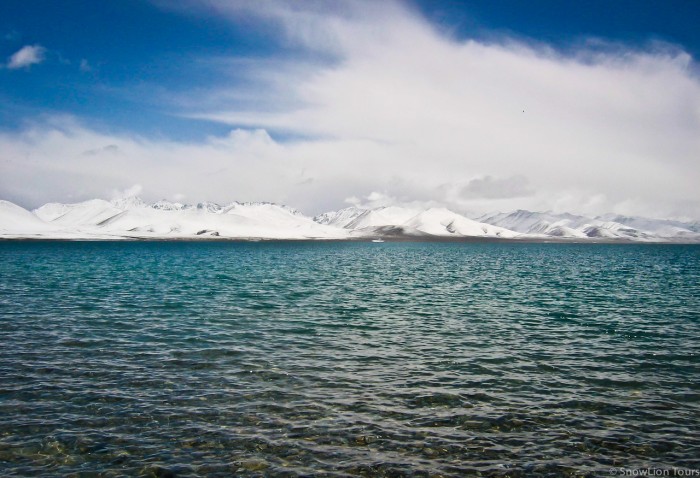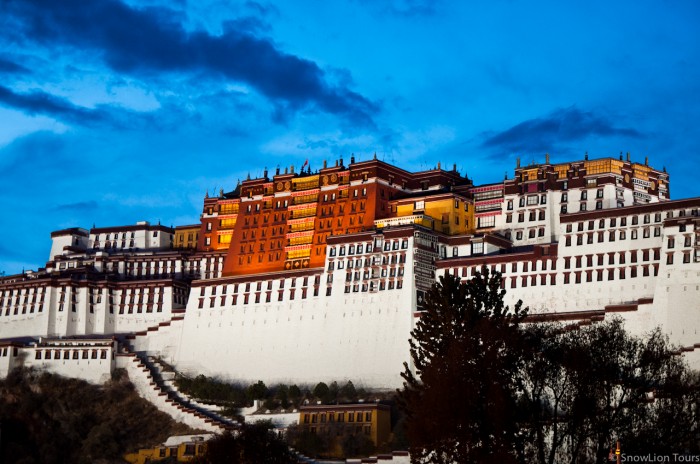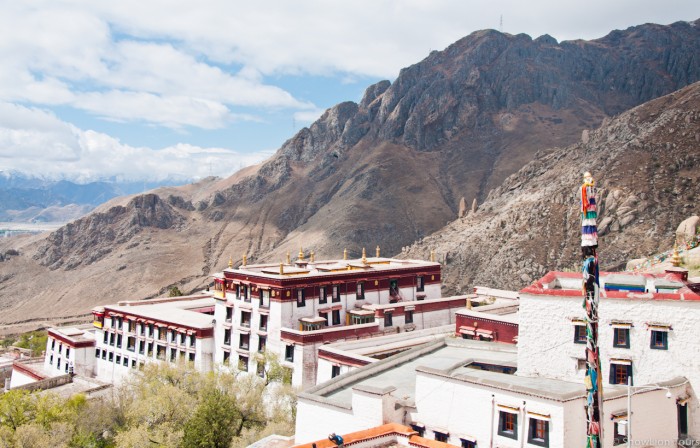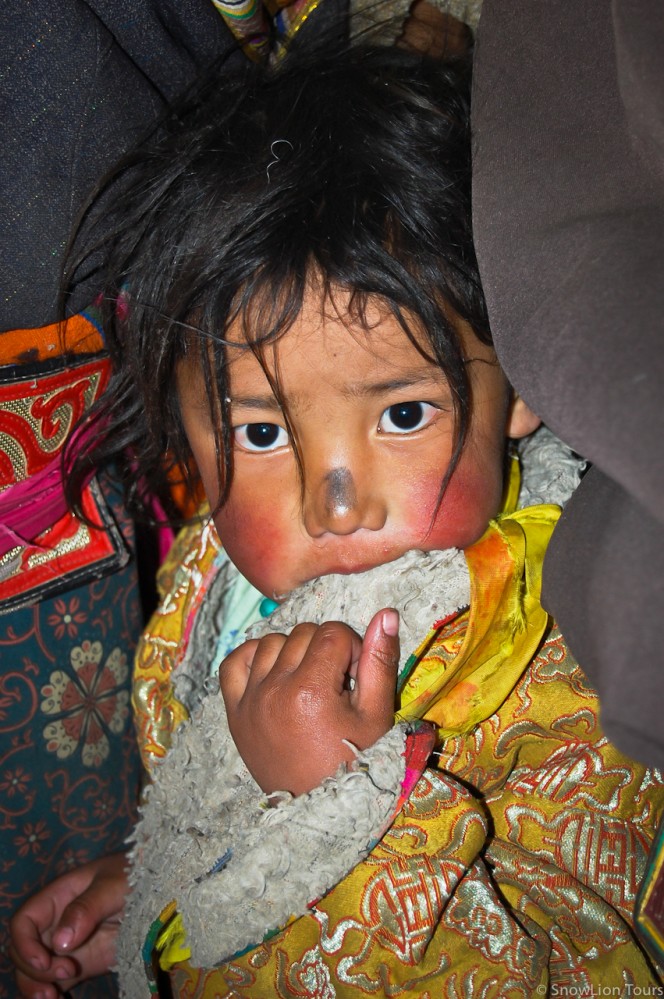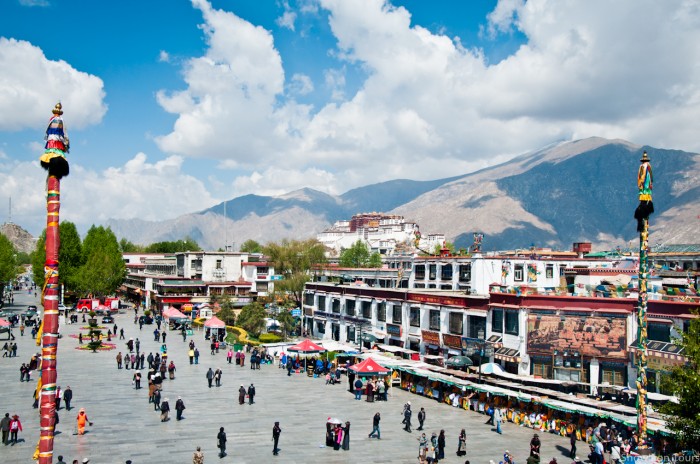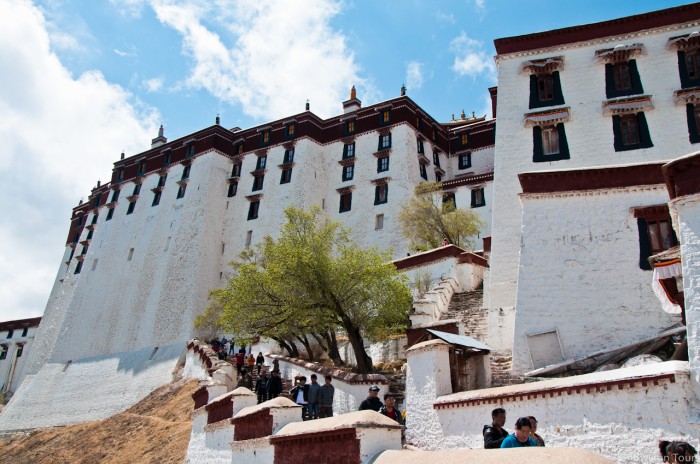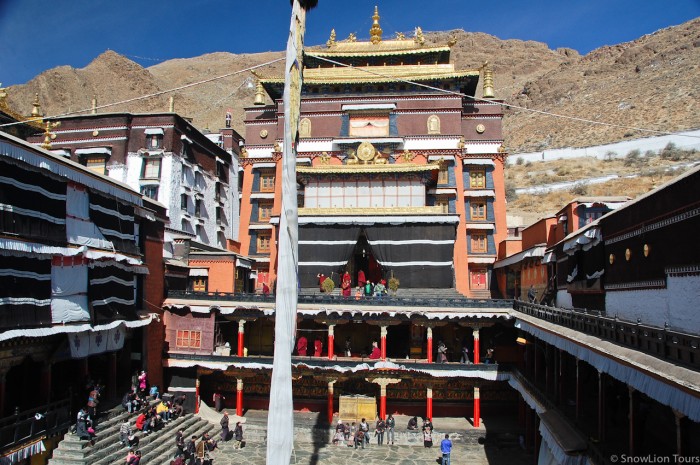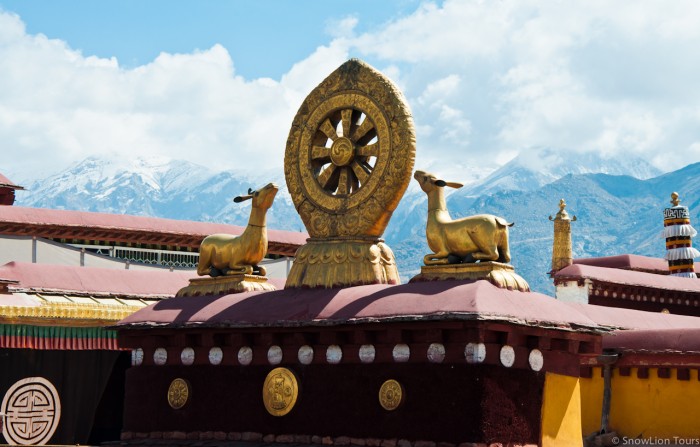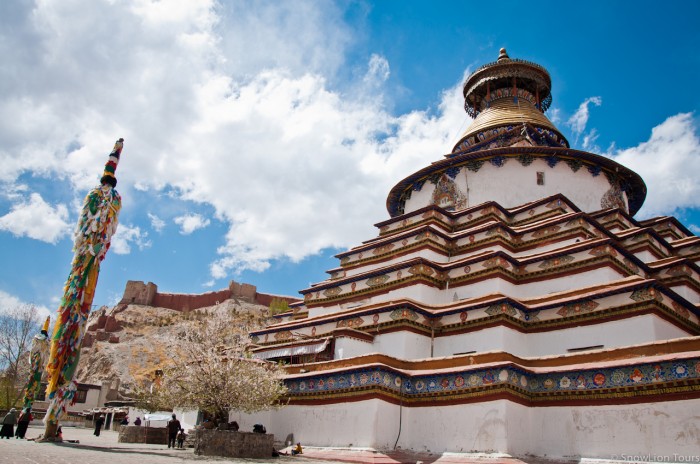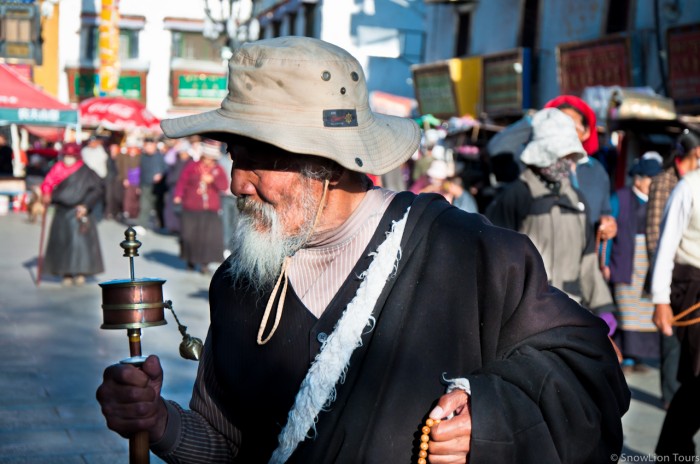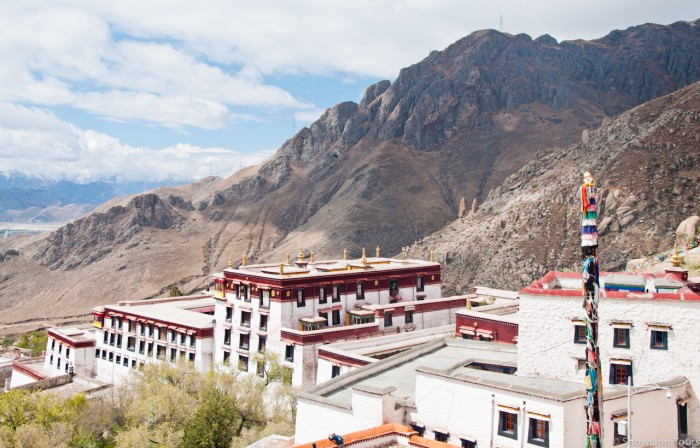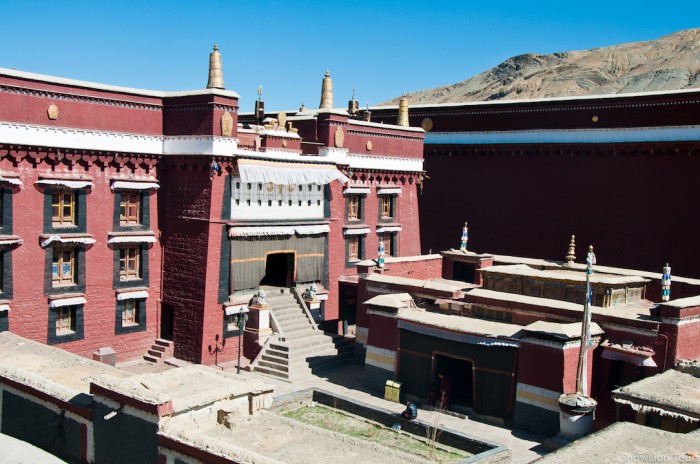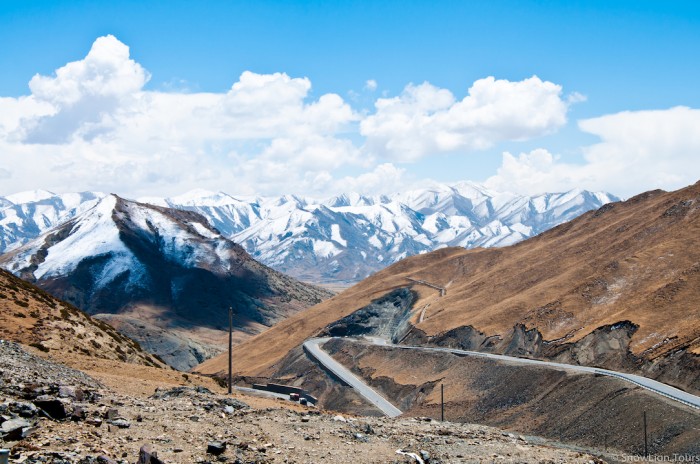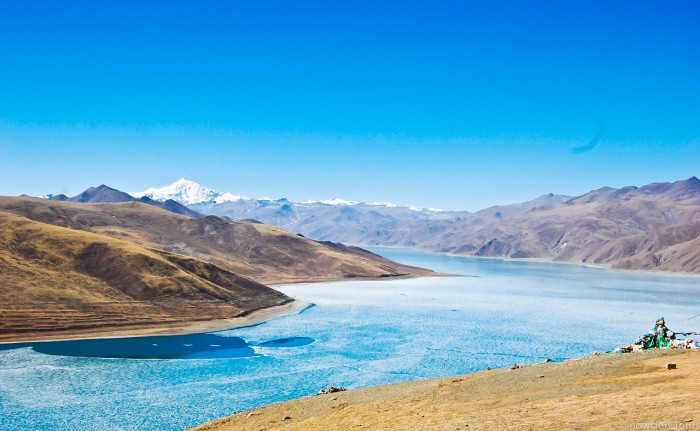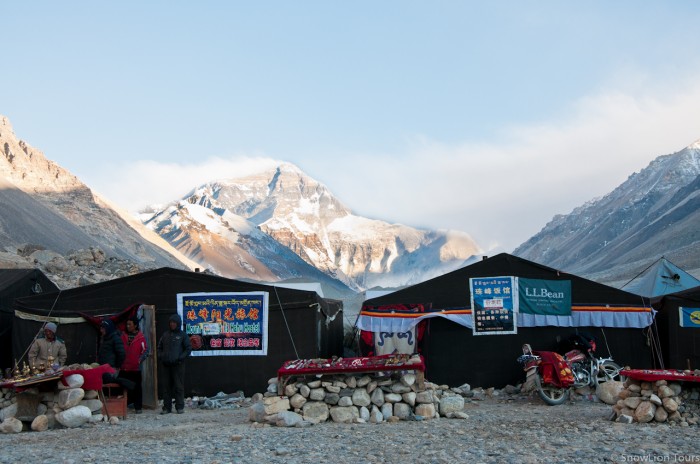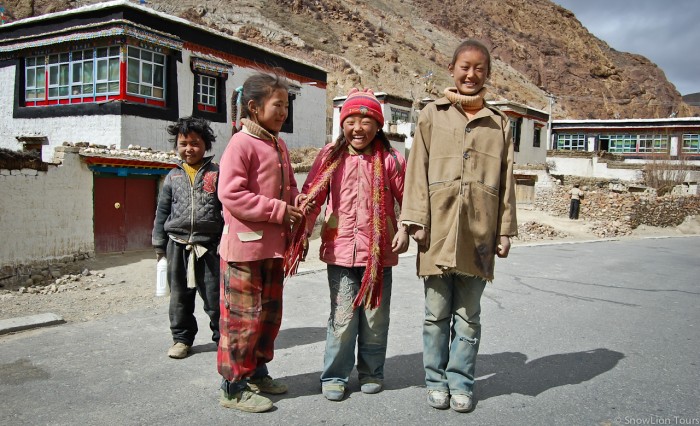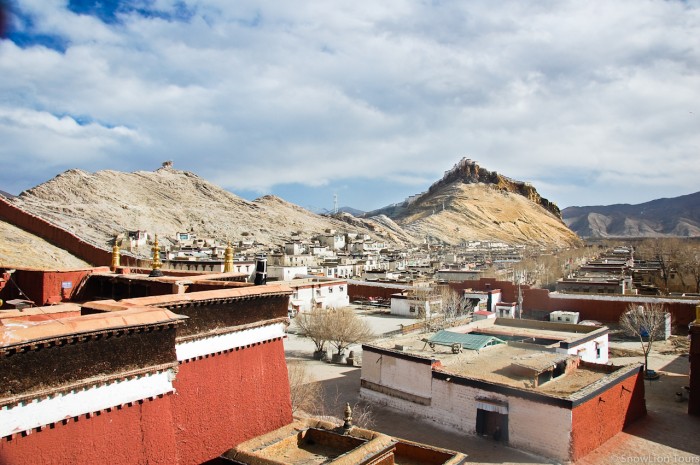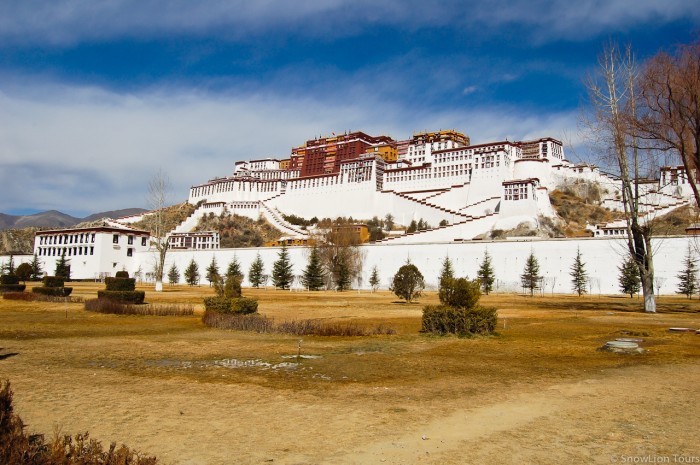The year 2014 is the Year of the Horse according to the Tibetan lunar calendar. This is the year during the 12-yearlong astrological cycle that is understood to magnify the beneficial effects of pilgrimage manifold. In Tibetan pilgrimage practice, it is said that pilgrimage during the Year of the Horse is karmically increasing all positive deeds in million of times!
Route: Lhasa ⇒ Drak Yerpa Meditation Caves ⇒ Ganden Monastery ⇒ Tsurphu Monastery ⇒ Yangpachen Hotspring ⇒ Namtso Lake ⇒Reting ⇒ Drigung Til ⇒ Tidrum Nunnery and Hotspring ⇒ Drak Sumtso Lake / Basumtso Lake ⇒ Bayi / Nyingtri ⇒ Tashigang ⇒ Mildro Gongkar ⇒ Mingdroling Monastery ⇒ Samye ⇒ Yamdrok Lake ⇒ Gyantse ⇒ Shigatse ⇒ Sakya Monastery ⇒Rongbuk Monastery – Mount Everest Base Camp ⇒ YungdrongLing ⇒ Lhasa
Highlights
- Pilgrimage in Tibet
- More than 30 monasteries and temples
- Attending religious ceremonies
- Bayi and Nyintri
- Hike to meditation caves and holy lakes
- Everest Base Camp
Details
- 23-day trip begins Lhasa, Tibet and ends at the Nepal border and Lhasa
- 22 nights in hotels and guesthouses
- Hiking to holly places
- Altitude from 2900-5200m
Tour Costs
- E-mail us for an exact quote
- See Prices & Booking for more information
Departures
- May 31,2014
Day 1: Arrive in Lhasa [3658m]
Welcome to Lhasa! Transfer to your hotel and get settled.
Day 2: Lhasa
Visit Drepung, one of the three most famous monasteries in Lhasa. Drepung is located just outside Lhasa on Gambo Utse Mountain. Once home to as many as 10,000 monks, the enormous monastic complex is the site of many prayer halls, dormitories, and temples. Just below the monastery is the Nechung temple, the former home of the state oracle. Afterwards, visit Sera monastery, where you can watch monks debate in the courtyard. If you enjoy hiking, walk the hour-long circumambulation path around the monastery complex. If time is enough, hike to Pabonka hermitage, founded by Songtsan Gampo in the 7th century.
Day 3: Lhasa
In the morning, visit the Potala Palace, the greatest monumental structure in all of Tibet. The Potala is 13 stories high and holds countless treasures in its many rooms. Built in 637 AD, the Potala has been home to the Dalai Lama lineage for more than a thousand years. Also visit the Jokhang Temple, the holiest temple in all of Tibet. From the rooftop you will see pilgrims from all over Tibet prostrating in front to the Jowo Buddha statue inside the monastery. Afterwards, walk through the Barkhor, a famous shopping street filled with goods and souvenirs from Tibet, Nepal, and India. Spend some time drinking sweet tea in a traditional tea house located on a rooftop overlooking the bustling Barkhor.
Day 4: Lhasa – Drak Yerpa meditation caves – Ganden monastery – Lhasa
A hermitage about 30km north of Lhasa, Drak Yerpa is one of the holiest cave retreats in central Tibet. Carved out of the side of a mountain, it is very peaceful and beautiful here. The drive passes through a small village and you can explore the many caves at this site. You might see some pilgrims meditating in the caves! In the afternoon drive up to the mountains to Ganden Namgyeling Monastery which is located on the ridge of Mount Wangkur. This monastery was founded in 1409 by Tsongkhapa and become the first and leading monastery of Gelukpa tradition.
Day 5: Lhasa – Garu nunnery – Tsurphu monastery [4300 m]
Garu Nunnery is a historical hermitage north of Lhasa. It is one of the oldest nunneries in the Lhasa area. The word garu derives from gar, which means “dance.” The famed Indian master Padmasambhava saw dakinis dancing at the spot where the monastery now stands, and gave it this name. In the afternoon drive to Tsurphu monastery (XII century) – the traditional seat of the Karmapa Black Hat lineage. The monastery was built in the middle of a valley with high mountains surrounding the complex. Above the monastery are traces of rock paintings and some meditation retreats.
Day 6: Tsurphu monastery – Yangpachen hot springs – Namtso lake [4700 m]
After the morning prayers in Tsurphu monastery drive to Yangpachen hot springs. In the early morning, mist rises from the geothermal lake, clouding the snow mountains in the background. Enjoy a soothing hot bath, relax your sore muscles and continue driving up to the mountains to Namtso lake. This beautiful turquoise lake, which is considered holy by Tibetans, is the highest saltwater lake in the world. It is surrounded by snowy mountains, and nomads camp here in the summer. Here try riding a yak, climb up a rocky hill for a great view of the lake, and drink tea with local nomads. Overnight at Namtso lake.
Day 7: Namtso lake – Reting monastery [4150 m]
Visit Reting Monastery on a hill side covered with ancient juniper trees. Explore the monastery grounds, watch monks in their daily rituals, and take a walk on the circumambulation path. Relax on the grass fields and take in the beautiful natural views. Spend the night in Reting Monastery Guesthouse.
Day 8: Reting monastery – Drikung Til monastery – Tidrum nunnery and hot springs [4325 m]
Drikung Til monastery is famous for its sky burial site. On the backside of the mountain ridge where Drigung is located is Tedrum Nunnery. Tucked away in a small, idyllic mountain village, there are hot springs at the nunnery and rolling green hills to climb and explore. Though it’s a popular place to visit in the summer, try hiking around a little and you might find yourself helping a nun milk yaks!
Day 9: Drikung Til/Tidrum – Draksum Tso lake [3550 m]
Drive to the holy Draksum Tso lake, also famous as Basong Tso lake in Kongpo dialect. This lake is associated with King Ling Gesar from the grand heroic epic ‘Gesar’. King’s spirit now resides in the sacred lake. The lake is surrounded by four prominent snow peaks: Mt. Namla Karpo, Mt. Ama Jomo Taktse, Mt. Naphu Gomri, and Mt. Darchenri. Walking across a floating bridge to Tsodzong island with Tsodzong Monastery located on it. The easy circuit of the island includes the ruins of His Holiness Dudjom Rinpoche’s retreat hut and many other relics and holy places such as a bay where 108 dakinis used to bathe.
Day 10: Draksum Tso lake – Bayi / Nyingtri [2995 m]
Continue on to Bayi. A short distance east of Bayi town is Mt. Pelri, a sacred peak from whose summit Padmasambhava reputedly dried up a lake covering the valley below to ensure the region’s future habitation. Pilgrims circumambulate the mountain in two to three hours, paying their respects to Padmasambhava’s rock handprint, knee print, as well as a holly stupa. The old township of Nyintri is situated below Mt. Bonri, the sacred mountain which is ranked along with Mt. Kailash as the most important sacred pilgrimage destination for Bonpos.. In Nyingtri visit Kushuk Drong – 2000-year-old juniper tree, which is sacred to Bon followers as well as to all local people.
Day 11: Bayi – Tashi Gang monastery – Katsel monastery – Meldro Gungkar [3600 m] or drive back to Lhasa
Drive to Meldo Gungkar – a small town situated on the wide banks of the Kyichu river. Here we will visit Katsel monastery. One of its temple is significant as one of the original demoness-subduing temples – it pinned the monster’s right shoulder.
Day 12: Meldro Gungkar – Dorje Drak – Mindroling monastery – Samye monastery [3700 m]
In the morning you’ll stop by Dorje Drak – historically one of the most important monasteries of Nyingma order. Then drive to Mindroling, in Tibetan means “Place of Perfect Emancipation”, is the largest and most important Nyingmapa monastery in U province of Central Tibet. For nearly 300 years its monastic university trained Nyingma scholars and yogis from all over Tibet. Then drive to Samye – the first Buddhist monastery in Tibet. It was built between in the mid of VIII century under the patronage of King Trisong Detsen. Samye Monastery is laid out on the shape of a giang mandala with the main temple representing the legendary Mt. Mery in the centre. Other buildings stand at the corners and cardinal points of the main temple, representing continents and other features of tantric Buddhist cosmology. Overnight at a monastery guest house.
Day 13: Day hike to Chimpu meditation caves – Tsethang [3650 m]
Chimpu meditation mountain retreat above Samye is revered as the sacred place of Guru Rinpoche’s speech. This is where he taught the Twenty-Five Disciples and where numerous disciples had profound realizations. Today, there are about hundred hermits living there in retreat. As we hike through Chimphu, there are many occasions to meet with them and make personal offerings. It’s about 3 hours hike one way. After the hike drive to Tsethang, the third largest city of Tibet, which is located in the valley of Yarlung Tsangpo river. Here visit Yumbulakhang Palace, the first palace ever constructed in Tibet.
Day 14: Tsethang – Yamdrok Lake – Samding monastery – Gyantse [3950 m]
Drive to Gyantse. Along the way cross over the Kamba la (4794m) and the Karo la passes (5010m), which boast spectacular views. After Kamba la, arrive at Yamdrok Lake, a holy turquoise-colored lake with stunning scenery. Visit Samding gompa – former seat of Dorje Pakmo, who was the highest female incarnation in Tibet, and the third highest-ranking person in the lamaist hierarchy after the Dalai Lama and the Panchen Lama. Stay the night in Gyantse.
Day 15: Gyantse – Shigatse [3836m] – Sakya [4280m]
In the morning, visit the Pelkor Chode Kumbum and Gyantse Monastery followed by a two hour drive to Shigatse. Here, see the giant Buddha in the famous Tashilhunpo monastery. Time allowing, join pilgrims in walking the long circumambulation path around the monastery, or explore the city streets. Afterwards, we will drive to Sakya and visit Sakya Monastery. Sakya Monastery is unique because of its medieval Mongolian architecture. Walk up the kora path alongside the monastery to see the ruins of the older buildings, from which you can see great views of the monastery and surrounding valley.
Day 16: Sakya – Rongbuk monastery – Everest Base Camp [5200m]
After passing through scenic valleys and driving over rocky mountains, you will reach Rongbuk Monastery, where you will have a fabulous view of Mt. Everest. Rongbuk monastery is the highest monastery in the world. Rongbuk Monastery to Everest is about 8km, and along the way you there are spectacular views of the world’s tallest mountain. You can either take a two-hour hike or take a bus to Everest Base Camp. Spend the night in a warm yak-hair tent run by a Tibetan family
Day 17: Everest Base Camp – Nyalam [4300 m]
You will see spectacular Himalayan ranges along the way to Nepal border. Passing by Nyalam you’ll stop to Milarepa’s cave. The cave, which overlooks the entrance to the hidden valley of Lapchi Gang, is entered from the gompa’s vestibule. Pilgrim’s offerings of decorated stones along the path and sweet-smelling herbs and wild flowers growing all around make this a place of great peace and beauty.
Day 18: Nyalam – hike to Dara Tso lake – Zhangmu [2300 m]
A day hike from Nyalam to a holy lake Dara Tso from where you can see the glaciers of the Langtang and Jungal Himal, and Mt. Shishapangma in a clear day. In the afternoon drive to Zhangmu – a border town with a mild and humid subtropical climate, which is very rare for Tibet.
Day 19: Zhangmu – Shigatse [3850 m]
Part of the group departs Tibet to Nepal, others are heading back to Lhasa. Stop at scenic places for taking amazing pictures of the Himalayan range. Arrive in Shigatse in the late afternoon. Spend the night at the hotel.
Day 20: Shigatse – Yungdrungling monastery – Lhasa
You’ll visit a famous Bonpo Yungdrungling monastery on the way back to Lhasa. Although it looks like a typical Buddhist monastery, one should pay special attention to the swastikas swirling counterclockwise.
Day 21: Lhasa – Drak Yangdzong – Shugseb nunnery or Gongkar [3750 m]
After a few hour hike you will reach Drak Yangdzong – a group of caves associated with Padmasambhava as well as with the great meditators of the past. After exploring the caves drive to Shugseb nunnery, which was founded by Machik Labdron. She developed the style of ascetic practice ‘Chod’ (Object of Cutting). It is still practiced actively in Tibetan tantra. By separating the spirit from the body, the physical part is left to the demons. This ritual is especially necessary for the sky burial ceremony.
Day 22: Gongkar – Dzong Kumbum – Lhasa
The Dzong Kumbum is a group of caves situated neat Ngadrak Village. You can see ancient wall painting in the caves! Drive back to Lhasa in the afternoon. Free evening for shopping, restaurants and Lhasa tea houses.
Day 23: Depart Lhasa
Say goodbye to Tibet!




